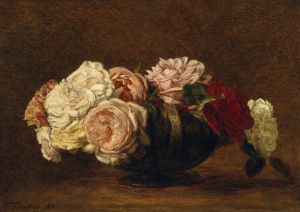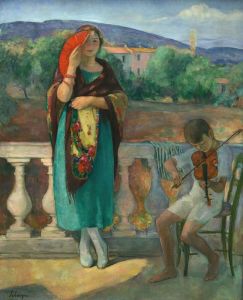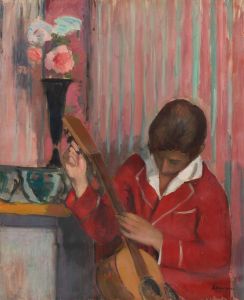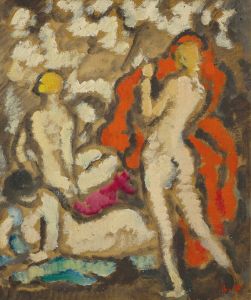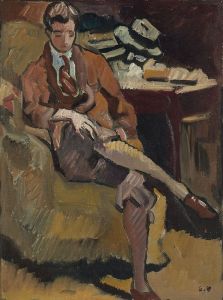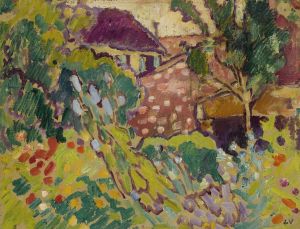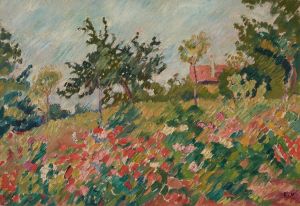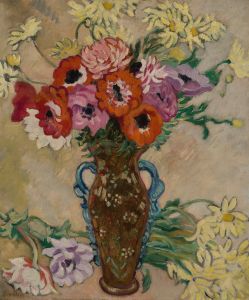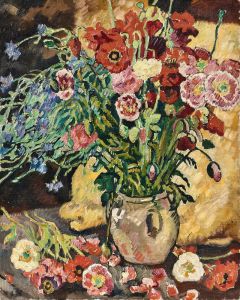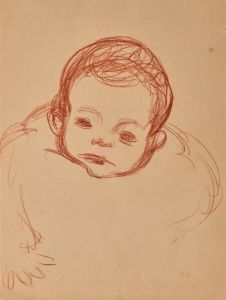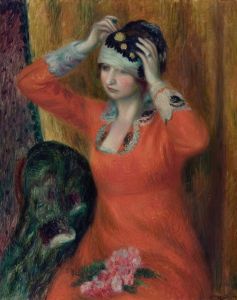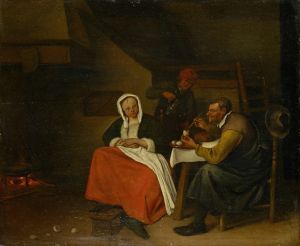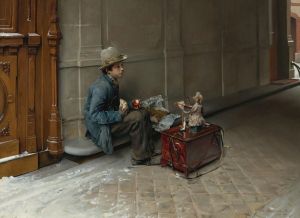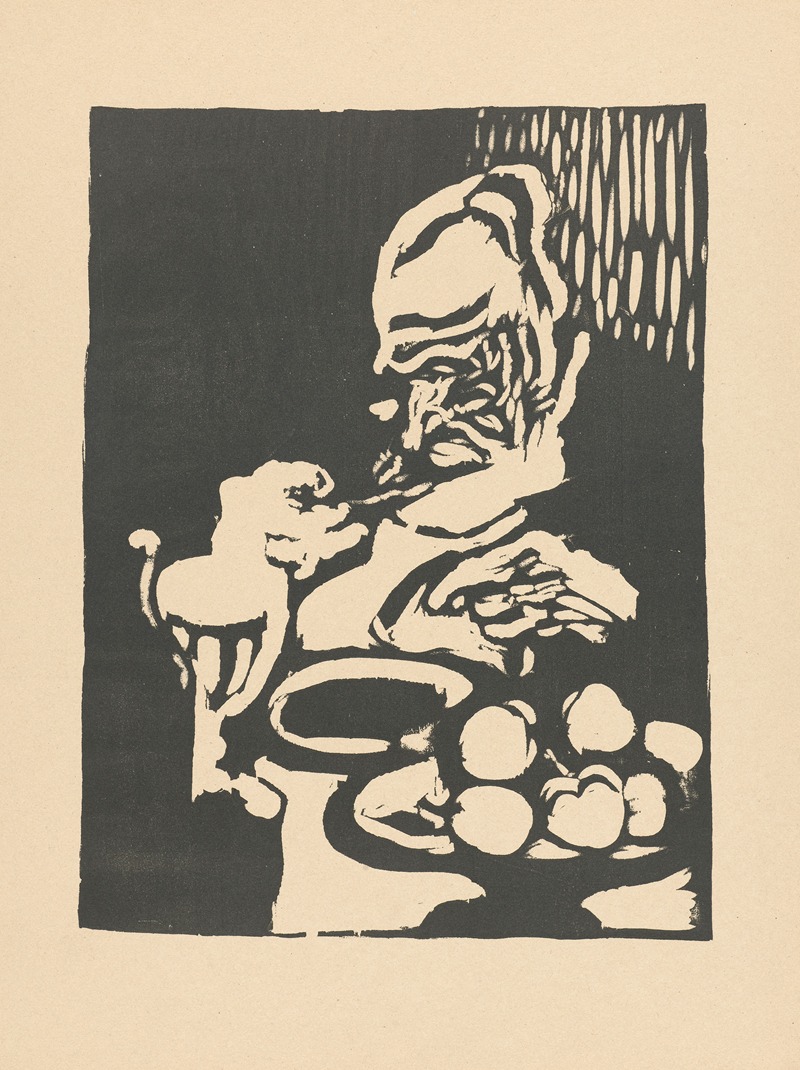
Man eating at table with glass and bowl of fruit
A hand-painted replica of Louis Valtat’s masterpiece Man eating at table with glass and bowl of fruit, meticulously crafted by professional artists to capture the true essence of the original. Each piece is created with museum-quality canvas and rare mineral pigments, carefully painted by experienced artists with delicate brushstrokes and rich, layered colors to perfectly recreate the texture of the original artwork. Unlike machine-printed reproductions, this hand-painted version brings the painting to life, infused with the artist’s emotions and skill in every stroke. Whether for personal collection or home decoration, it instantly elevates the artistic atmosphere of any space.
Louis Valtat was a French painter associated with the Fauvist movement, known for his vibrant use of color and bold brushwork. Born on August 8, 1869, in Dieppe, France, Valtat was educated at the École des Beaux-Arts and the Académie Julian in Paris. His work is characterized by a distinctive style that blends elements of Impressionism and Post-Impressionism, leading to his involvement in the Fauvist movement, which emphasized painterly qualities and strong color over representational or realistic values.
"Man Eating at Table with Glass and Bowl of Fruit" is one of Valtat's notable works, though specific details about the painting's creation, such as the exact year it was painted, are not widely documented. This painting exemplifies Valtat's interest in everyday scenes and his ability to infuse them with a sense of vibrancy and life through his use of color and composition.
The painting depicts a man seated at a table, engaged in the act of eating. On the table, there is a glass and a bowl of fruit, suggesting a simple, yet intimate dining scene. Valtat's use of color in this work is particularly noteworthy; he employs a vivid palette that brings a sense of warmth and immediacy to the scene. The brushwork is loose and expressive, a hallmark of Valtat's style, which allows the viewer to focus on the emotional and aesthetic experience rather than the precise details of the subject matter.
Valtat's approach to painting was influenced by his contemporaries, including Pierre-Auguste Renoir and Paul Signac, with whom he shared a friendship. His work often reflects the influence of Impressionism in its treatment of light and color, yet it also anticipates the bold, non-naturalistic color schemes that would become a defining characteristic of Fauvism. Valtat's paintings, including "Man Eating at Table with Glass and Bowl of Fruit," often explore the interplay between color and form, creating compositions that are both dynamic and harmonious.
Throughout his career, Valtat remained somewhat on the periphery of the major art movements of his time, yet he maintained a consistent and personal style that earned him recognition and respect among his peers. His work was exhibited in various salons and galleries, contributing to the broader appreciation of modern art in the early 20th century.
"Man Eating at Table with Glass and Bowl of Fruit" reflects Valtat's ability to capture the essence of a moment through his unique artistic lens. The painting invites viewers to appreciate the beauty in everyday life, seen through the vibrant colors and expressive brushstrokes that define Valtat's oeuvre. While not as widely known as some of his contemporaries, Valtat's contributions to the development of modern art remain significant, and his works continue to be studied and appreciated for their innovative use of color and form.






